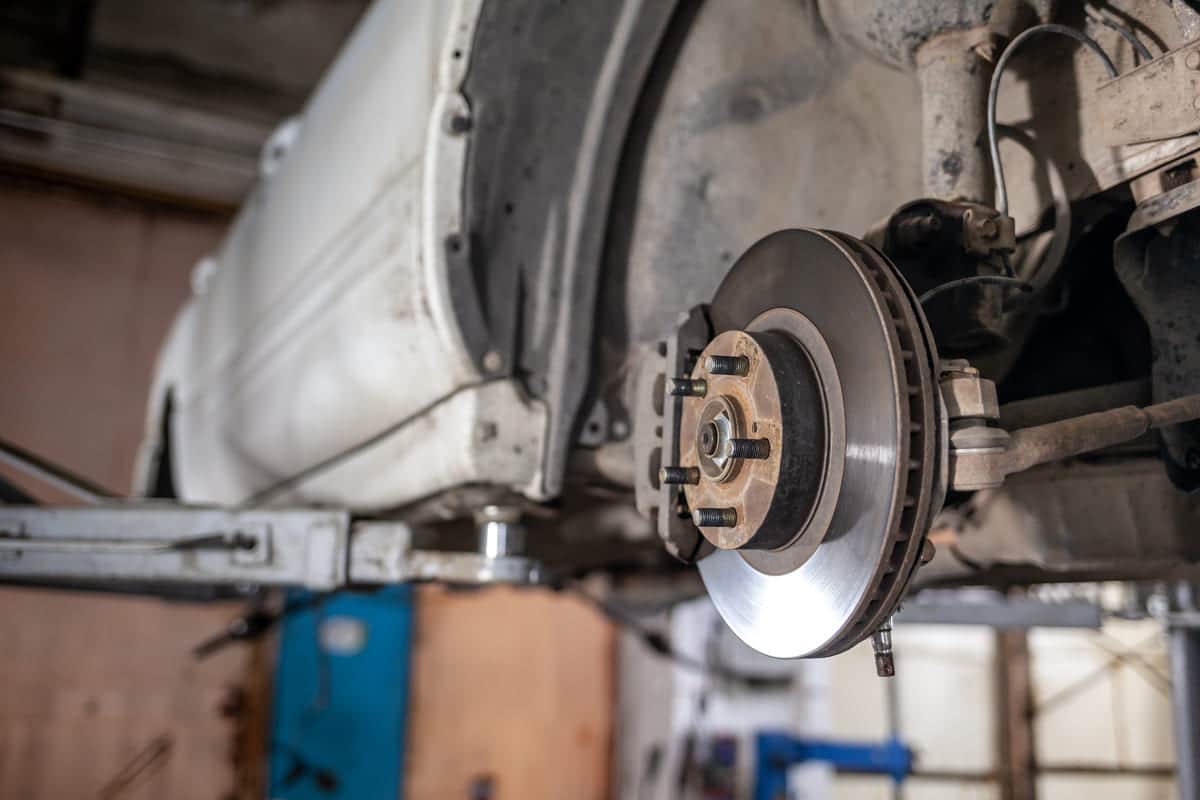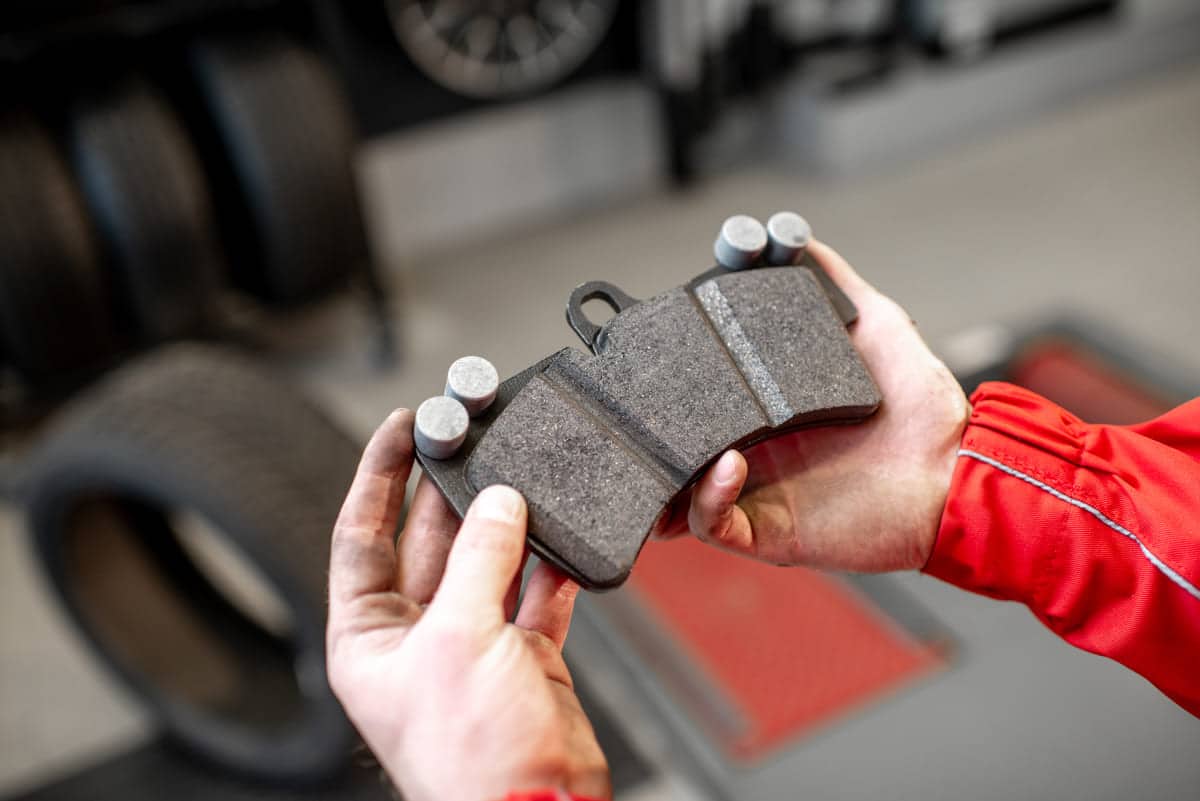Brake pads are key to vehicle safety and ensure reliable stopping power. These are made from composite material, that wears out over time, and need to be maintained. Their performance is critical to the overall braking system.
What is a Brake Pad?
A brake pad is part of a vehicle’s braking system. It creates friction on the brake rotor to stop the vehicle. Brake pads have a metal backing plate and a high-friction material. This friction material wears out over time and needs to be replaced.
They come in organic, semi-metallic, and ceramic. Each type has a different performance. Well-functioning brake pads mean safe and effective braking. They help reduce stopping distance and prevent accidents. Regular inspection and replacement on time help maintain optimal brake performance.
References
- Brake pad. Wikipedia. Retrieved from
- Brake pad. Collins Dictionary. Retrieved from https://www.collinsdictionary.com/dictionary/english/brake-pad
History of Brake Pad
Brake pads were first introduced in the early 20th century. Early vehicles used drum brakes with asbestos linings. In the 1950s, manufacturers introduced disc brakes. It’s better and has better heat dissipation.
Asbestos brake pads dominated until the 1970s. Health concerns prompted the development of safer materials. Ceramic and semi-metallic brake pads became popular. They are durable and effective.
Today, advancements still improve brake pad materials and performance. These innovations mean safer and more efficient braking systems for modern vehicles
References
- History of Brake Pads. Wikipedia. Retrieved from
What are the Types of Brake Pad?
Brake pads come in several types, each for different driving conditions and vehicle requirements.
Organic Brake Pads
Organic brake pads use materials like glass, rubber, and resins. They are quiet and gentle on brake rotors. But they wear out faster and are not effective in extreme conditions.
Semi-Metallic Brake Pads
Semi-metallic brake pads have metal fibers. They have good heat dissipation and durability. They produce more noise and dust compared to others but are effective for most driving conditions.
Ceramic Brake Pads
Ceramic brake pads use ceramic fibers and non-ferrous filler material. They are quiet and produce little dust. They can handle high temperatures but are not ideal for heavy-duty applications due to higher costs.
Low-metallic NAO Brake Pads
Low-metallic NAO (Non-Asbestos Organic) brake pads have a small amount of metal. They have good braking performance and heat transfer but produce more noise and dust than organic pads.
Each type of brake pad serves a specific purpose, balancing performance, noise, dust, and cost.
References
- Types. Wikipedia. Retrieved from

How Does a Brake Pad Work?
Brake pads stop the vehicle. Here’s how it works:
Step 1: Pedal Press: When you press the brake pedal, it activates the master cylinder. The master cylinder sends hydraulic fluid through the brake lines.
Step 2: Pressure Build-Up: Hydraulic fluid increases pressure in the brake caliper. The pressure pushes the caliper pistons.
Step 3: Pad Engagement: Pistons push the brake pads on the brake rotor. The friction material on the pads touches the spinning rotor.
Step 4: Friction Generation: Friction between brake pads and rotor slows down the rotation. The conversion of kinetic energy to heat energy reduces the motor vehicle speed.
Step 5: Heat Dissipation:Brake pads and rotor dissipate the generated heat. Good material ensures good heat management, and no brake fade.
Step 6: Release: When you release the brake pedal, the hydraulic pressure drops. Brake pads retract a little, allowing the rotor to spin freely again.
This process is controlled and efficient braking, is safe for the vehicle. Regular maintenance means brake pads function well.
When Should I Replace My Car Brake Pad?
Regular brake pad maintenance is safe. Here’s when to replace your brake pads:
- Listen for Noise: A squeaking or screeching sound means worn brake pads. This noise is because of wear indicators built into the pads.
- Check for Vibration: If you feel vibration or pulsation in the brake pedal, it may mean unevenly worn brake pads. This affects braking performance.
- Inspect Pad Thickness: Look through the wheel spokes and inspect the brake pads. If the pad thickness is less than 1/4 inch, replace them.
- Check Brake Performance: Longer stopping distance or spongy brake pedal feel means worn pads. Reduced braking efficiency is not safe.
- Check Brake Dust: More brake dust on your wheels may mean excessive pad wear. Regular cleaning helps you spot this early.
- Follow Manufacturer Guidelines: Check your vehicle’s manual for specific brake pad replacement intervals. Manufacturers provide guidelines based on usage.
- Respond to Alert: Some modern cars have electronic sensors that trigger dashboard alerts when brake pads are worn. Pay attention to these warnings.
Timely replacement of brake pads ensures optimal braking performance and enhances vehicle .
Reference
-
- How to Check Brake Pads. Wagner Brake. Retrieved from
How to Choose the Right Brake Pad for a Vehicle?
Choosing the right brake pad is safe and good. Here’s how:
- Driving Conditions: Consider your driving condition. City driving, highway driving, or off-roading each requires different brake pad characteristics.
- Vehicle Requirements: Check your vehicle’s manual for specifications. Manufacturers recommend specific types based on the vehicle’s design and performance.
- Material Type: Choose between organic, semi-metallic, ceramic, or low-metallic NAO pads. Each has different benefits in terms of noise, dust, and durability.
- Performance Needs: High-performance vehicles may require special pads for better heat dissipation and stopping power. Standard vehicles are good with general-purpose pads.
- Weather: In cold climates, some brake pads may harden and lose effectiveness. Choose pads that perform well in your local weather.
- Budget: Brake pads have different prices. High-end pads are better but budget-friendly options can still provide good braking for daily driving.
- Read Reviews and Ratings: Read reviews and ratings from other drivers. Real feedback helps you gauge the performance and life of different brake pads.
- Take Professional Help: Consult a mechanic or brake specialist. They can advise you on the best option for your vehicle and driving habits.
Choosing the right brake pad is a balancing act of performance, cost, and specific driving needs. Do it right and you’re safe and efficient.
References
- Choosing the Right Brake Pads for Your Vehicle. TGP India. Retrieved from https://www.tgpindia.com/choosing-the-right-brake-pads-for-your-vehicle/


